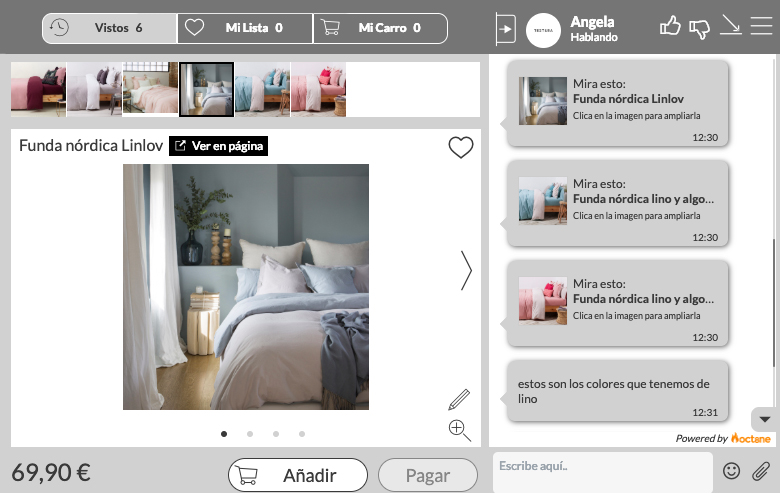
How to give customer service a personal touch when using a livechat
Connecting with the customer is essential. There are a ton of statistics that confirm it, like 64% of consumers believe that the customer experience is more important than the price when they decide to make a purchase. At Oct8ne, we always talk about the importance of personalization, but how do we get that personal touch?
Why it is so important to give customer service a personal touch
Livechats let us give immediate attention, but it can be quite impersonal if we don’t optimize our work. Customizing the treatment each customer receives allows us to build long-term relationships, stand out from the competition, and close more sales.
We can’t forget that there’s a customer on the other side with the same needs we have when we make an online purchase. We have to treat them like we would want to be treated.
The main reason a customer changes websites and makes a purchase from another one is because they feel like no one is paying attention to them or looking after their needs. In fact, 73% of customers “fall in love” with a brand when they get good customer service.
One e-commerce that has taken the quality of its support seriously is Textura, one of our success stories. They’ve managed to segment their traffic well to capture potential customers and not only attend them, but also advise them during the purchasing process.
“We don’t just answer questions, we advise the client. We believe that giving advice is something personal and, therefore, behind each recommendation is a team that knows our catalog.” Their agents show an average of 4.5 products in each session to ensure that customers find what they want. This has allowed them to increase their e-commerce conversion up to 23.60%.


Tips to make customer service more personal
1. Be close and accessible
Each conversation is an opportunity for a sale and return if you know how to understand your customers and give them personalized attention. You can introduce yourself with your name, refer to customers by theirs and make them feel welcome in your store.
Customers want to talk with people. Even though 33% of users are frustrated by you having a bot service so they don’t have to wait, if you need a moment during the conversation to find the product they want or to check data, make sure to let them know using everyday language.
Try talking to them like you would a person you know. Formal and polite expressions can be used with an informal tone: “Please give me a minute and let me check it.” The secret is empathy: treat them how you’d want to be treated. Try using emojis 😉
2. Show up right when they need you
We live in the era of automation and can apply it to personalized customer service. It’s important to establish a series of predictive algorithms that detect which customer needs your help based on their web browsing patterns.
Triggers facilitate the work your customer service team does just like the buyers’ experience: Users will see how they offer assistance right when they need it and the customer service department will see what type of help each visit requires based on the first personalized message that triggered the chat and the customer’s response.
The bots or automatic answers are also useful because they can speed up the attention process and keep your customers from waiting, but they should only be used as a first step before a conversation. Don’t forget that automated messages also need to have an approachable tone.
3. Know your customers
Normally, agents don’t know what the customer is looking for or what page they’re on until they ask. But if the customer service department has a window with contextual information before talking to each user — What products have you seen? What page are you on? How many items have you added to your cart? — you’ll know their needs beforehand. This way you can take advantage of the sales opportunity and directly recommend what you know they need.
Communication will be faster because the customer will give fewer explanations of what they’re looking for and the agent will understand the customer much better and promote the conversation. In addition, another 33% of consumers are frustrated when they have to explain the same thing to a second agent, so having all this information – and the previous conversation with a colleague- will keep customers from repeating the whole process.












